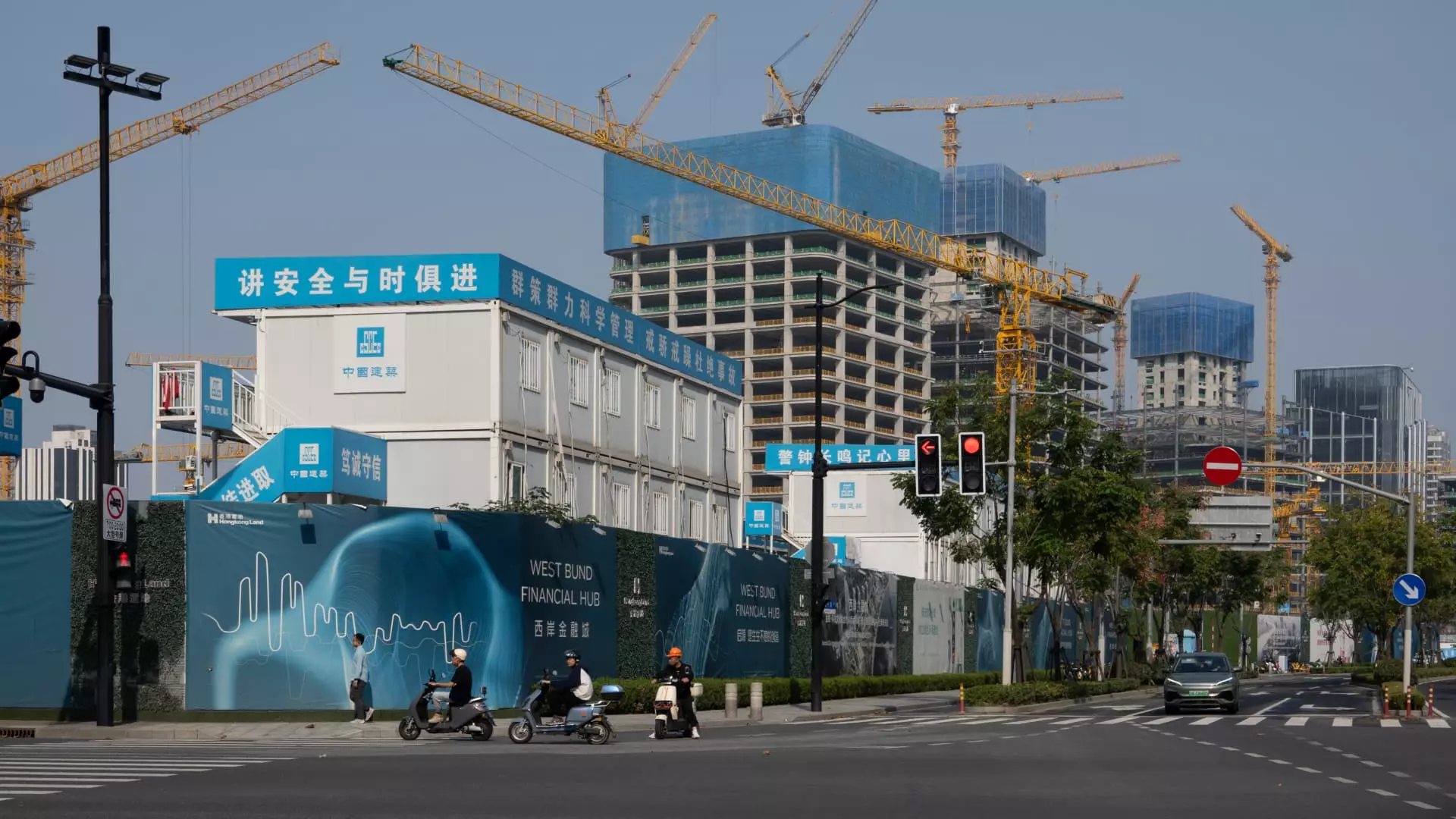Recent reports from China highlight a mixed economic scenario, demonstrating a combination of improving retail sales and a significant downturn in real estate investment. In October, the National Bureau of Statistics disclosed that retail sales experienced a year-on-year surge of 4.8%, surpassing forecasts of 3.8% as estimated by a Reuters poll. This marks an upward adjustment from September’s relatively modest growth of 3.2%. The rise in consumer spending indicates a robust recovery-driven largely by stimulus measures that the government has put into effect. However, while consumer confidence appears to stabilize, the shadows of a struggling real estate market loom large over these developments.
Alongside retail growth, industrial production rose by 5.3% in October from the previous year. Nonetheless, this increase fell short of the anticipated 5.6%. The less than expected growth in industrial output raises questions about the sustainability of this upward trend, especially as fluctuation in global demand continues to influence the nation’s manufacturing landscape. Fixed asset investments also show a year-to-date increase of 3.4%, which again did not match the predicted 3.5%, evidencing a cooling in infrastructure spending.
Compounding the situation is the troubling state of the real estate market, which has witnessed a steep decline. Between January and October, investments in real estate fell dramatically by 10.3%, outstripping the prior months’ decline of 10.1%. Historically, such a downturn is reminiscent of the significant declines seen in late 2021, marking this as a critical juncture for one of China’s pivotal economic sectors.
In response to the deteriorating conditions of the real estate market, government spokesperson Fu Linghui reassured the public of actionable measures taken since September to address the situation. He characterized the current state of the real estate sector as showing “active improvement,” indicating a government stance aimed at sentiment stabilization. Analysts suggest that a slight recovery in the real estate market may occur over the next 12 to 18 months, especially as the decline in sales of new properties showed signs of moderation in October. In the first ten months of 2023, new property sales dropped by 20.9%, an improvement from the 22.7% slide recorded earlier in the year.
The overall employment situation in urban areas also hints at improvement, with the unemployment rate lowering to 5% from 5.1% in September. Still, lingering uncertainties about domestic demand and external economic pressures create a precarious environment for recovery. The National Bureau of Statistics attributes recent positive developments to the acceleration of existing policies coupled with new incremental measures introduced in October.
The Chinese government has significantly intensified its stimulus efforts in recent months. Such measures, including interest-rate cuts from the central bank and a sweeping 10 trillion yuan ($1.4 trillion) initiative aimed at addressing local government debt, signal a proactive approach to spur economic activity. Expectations for further fiscal support could likely amplify growth efforts in 2024, contributing to an overall goal of achieving a 5% growth target for the year.
Despite these efforts, it is critical to acknowledge the underlying issues that hamper full economic recovery. Consumer habits reflect a cautious spending approach, highlighted during the recent Golden Week holiday. The mismatch between rising retail figures and stagnant domestic demand emphasizes the necessity for targeted consumer incentives beyond indirect measures taken thus far.
China’s current economic landscape presents a paradox: strong retail growth juxtaposed with a faltering real estate sector. While government interventions offer hope for stabilization, continued vigilance is essential to ensure that these efforts translate into sustained economic recovery. The path forward will require not only a strict adherence to fiscal stimulus but also a reevaluation of market confidence, consumer sentiment, and structural reforms in the real estate industry. As the nation navigates these challenges, the interplay between short-term gains and long-term stability will be critical in shaping its economic future.


Leave a Reply